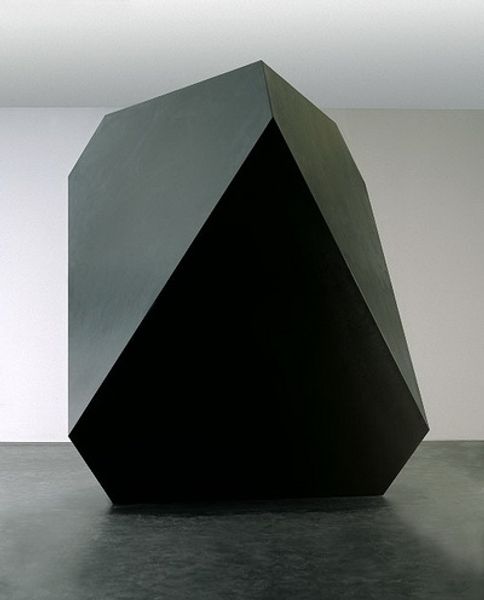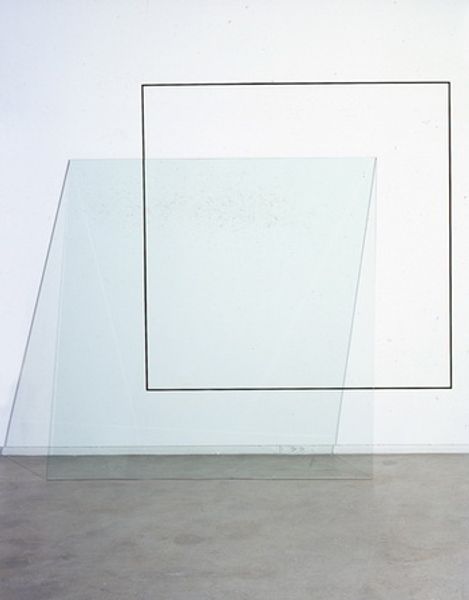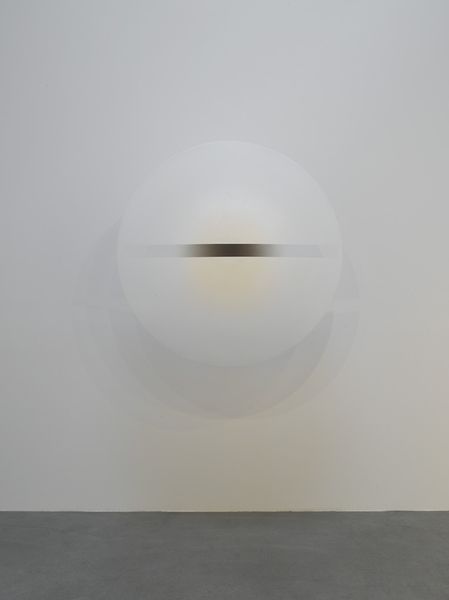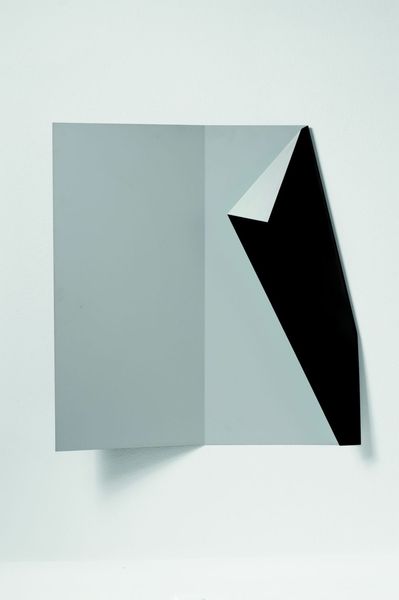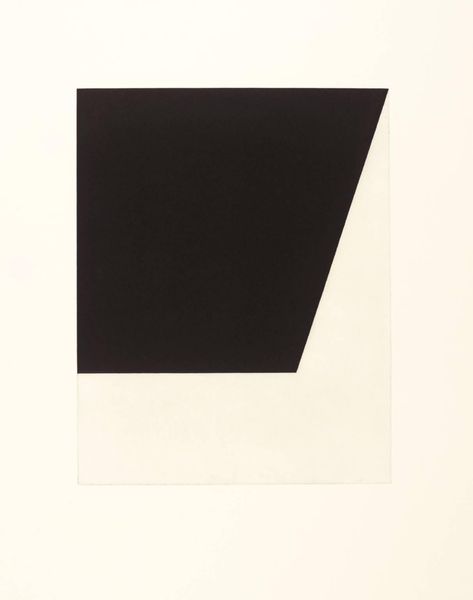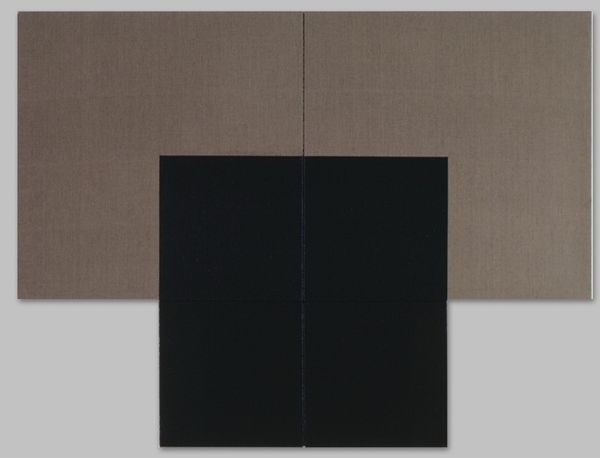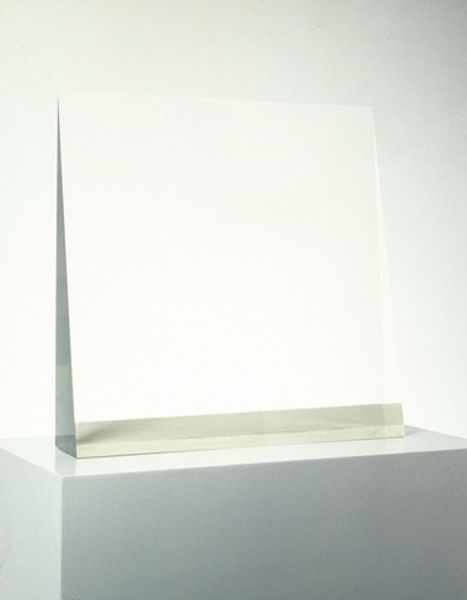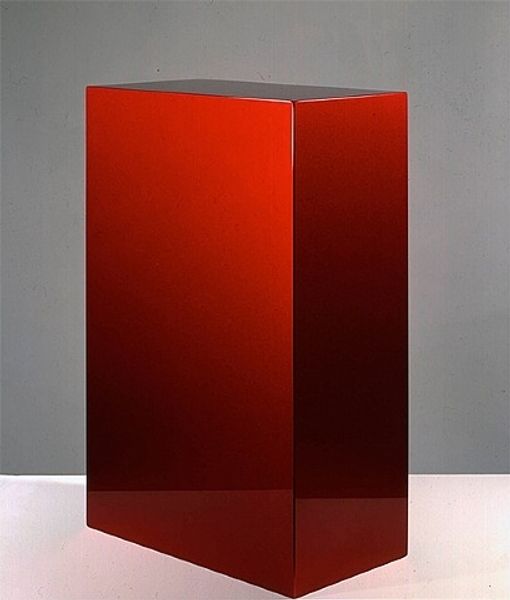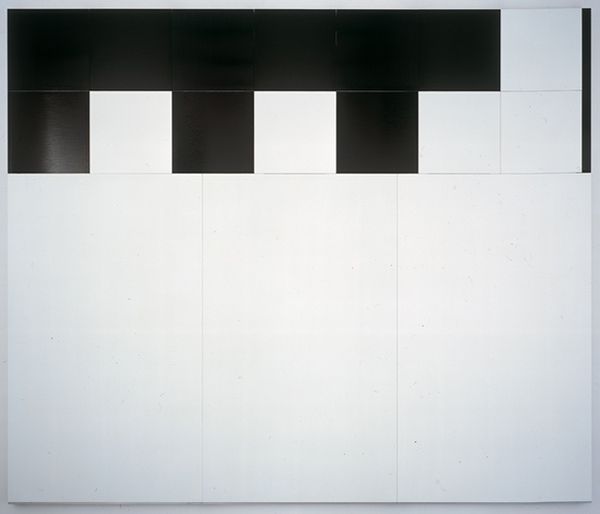
acrylic-paint, sculpture
#
minimalism
#
acrylic-paint
#
geometric
#
sculpture
#
abstraction
#
hard-edge-painting
Copyright: Peter Alexander,Fair Use
Curator: This is Peter Alexander’s "Green Widget," created in 1969. It's a striking acrylic sculpture, and a beautiful example of Minimalism. What are your initial thoughts? Editor: It gives me a sense of quiet, almost… foreboding? The way the dark green fades from such stark clarity at the top…it feels heavy. Oppressive, almost. Like something beautiful turning toxic. Curator: The ombre effect definitely plays with our perception. Consider the cultural context of 1969. A time of turbulence and social upheaval, the hard-edge painting aesthetic in this sculpture—that controlled gradient, could represent a desire for order, but perhaps a naive one? Editor: Exactly! The gradient could symbolize that supposed controlled fade from a free idyllic life to total pollution due to capitalism's and societal issues, but even its visual form, simple though it is, feels inherently unstable. That lean! Curator: Peter Alexander was working in California at the time, deeply influenced by the light and the ocean. But "Green Widget" is quite unlike some of his more translucent resin works. I wonder if this darker palette speaks to a growing awareness of environmental issues, already looming large in the late '60s. Editor: It's an interesting reading. The shape itself, the "widget," seems intentionally devoid of specific meaning, almost like a building block. Was the intent of Peter Alexander, at that precise period, not to let go and warn everyone that this would collapse? It could be that this "widget" may symbolize capitalism ready to collapse. Curator: Interesting. Its form rejects classical artistic narratives but, because the geometric figure can also be considered a tool, perhaps it critiques the inherent values in productivity or consumption during the postwar years in America? Editor: It feels relevant now. The cool detachment of minimalism paired with that loaded green gradient makes this so haunting. A visual warning we’re still failing to heed. Curator: A prescient object indeed. Even its lack of an explicit message feels powerful now; it is our burden, ultimately, to read it—to decipher where we are positioned regarding Peter Alexander's prophecy, fifty years later. Editor: It is truly stunning. Hopefully, if visitors feel it is a cry for action they'll be more thoughtful about it today.
Comments
No comments
Be the first to comment and join the conversation on the ultimate creative platform.
